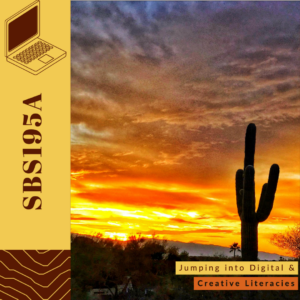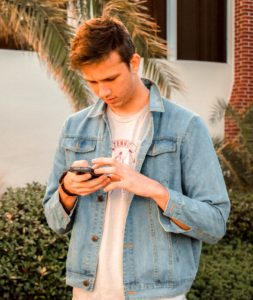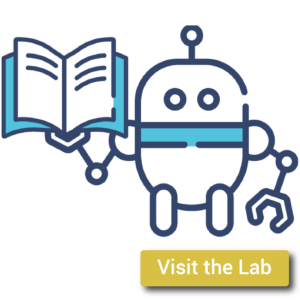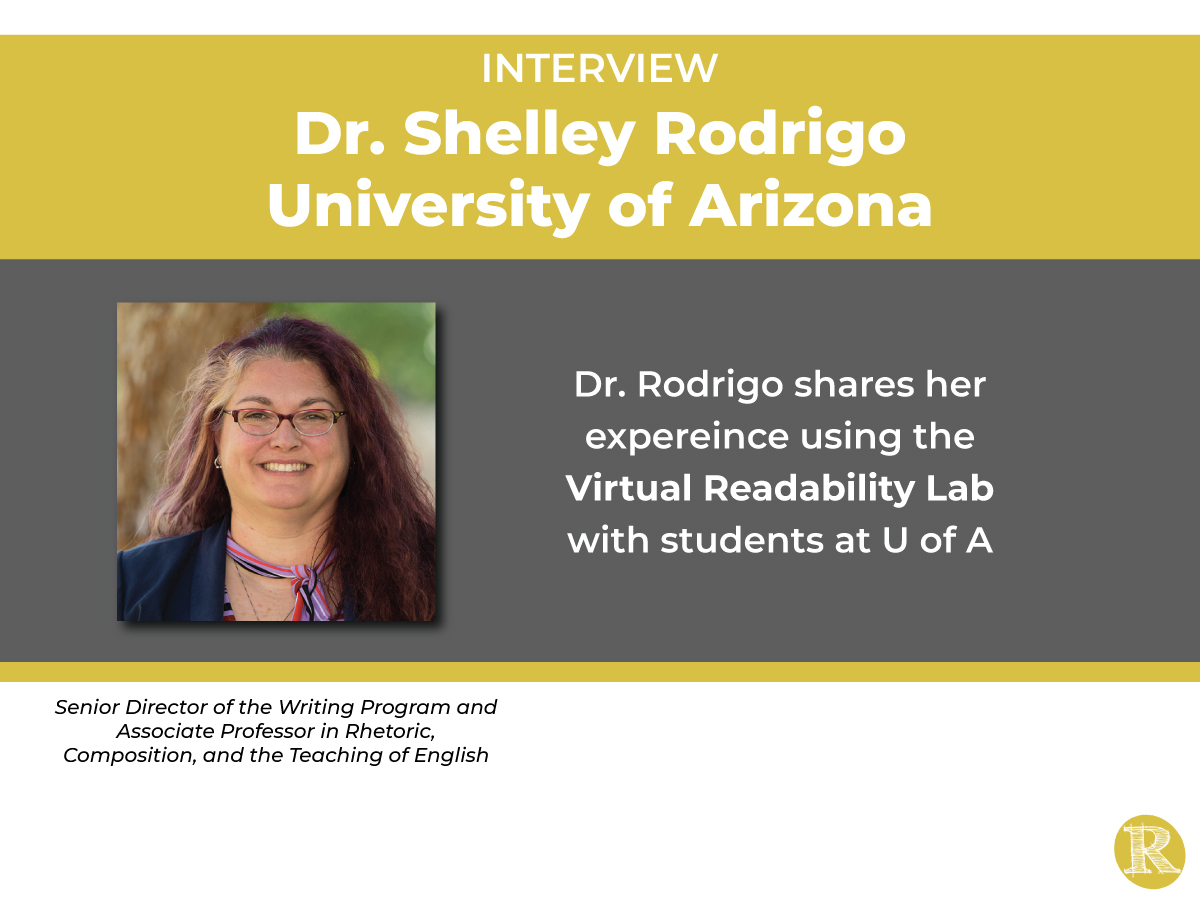A Discussion of the First Use of the Virtual Readability Lab with College Students
Readability Matters recently virtually sat down with Dr. Shelley Rodrigo, Senior Director of the Writing Program and Associate Professor in Rhetoric, Composition at The University of Arizona. Dr. Rodrigo was the first university professor to pilot the use of the Virtual Readability Lab with students. We discussed how she introduced the benefits of Readability and incorporated the VRL in her summer class for 35 incoming first-year students.
Describe how you incorporated the VRL and the benefits of improved Readability through personalized text formats into your summer class.
Due to COVID-19 impacting the end of spring 2020 terms for graduating high school seniors, The University of Arizona decided to offer a series of refresher courses for incoming first-year students; the program was called Wildcat Summer Success.
 My goal was to make students aware that they (1) probably have a more effective format they could use for reading, and (2) have the ability to change the format of texts in the majority of their digital reading spaces. (See course description and Readability Assignment below.)
My goal was to make students aware that they (1) probably have a more effective format they could use for reading, and (2) have the ability to change the format of texts in the majority of their digital reading spaces. (See course description and Readability Assignment below.)
Therefore, I prompted students to take the VRL, and then I designed assignments that prompted them to change their digital reading environments before reading (specifically in browsers and PDFs). And those same assignments asked them to reflect after changing their reading environment. I also designed an extra credit activity that prompted students to find resources that would help them learn how to change the format in different digital settings (.e.g., other browsers, mobile devices).
In your role at the University of Arizona, tell me about what problem this has the potential to solve.
College requires a lot of reading! Many new students, both at the undergraduate and graduate levels, are overwhelmed by the increase in reading. It’s not only more reading but often reading new, usually more complex and detailed/nuanced readings as well. Anything that will make students more effective and efficient with their reading is likely to make it more enjoyable or, more likely, less overwhelming and exhausting.
As a writing teacher and the Senior Director of the Writing Program at The University of Arizona, I am very sensitive to the differences concerning reading experiences. For example, our second-semester writing course emphasizes teaching secondary research. Many students are overwhelmed by the amount of time it takes to find library resources. And then, they need to read them! The time and energy required to find and read resources will obviously be different based on the topic. It is also, however, a different experience based on how effective and efficient the student can read through the sources. It might take one student 2-3 times the amount of time to do the reading before they even start writing.
 If we consider time is a resource that students have. Then students who take longer or struggle to read effectively will have to put more time and labor into completing the same amount of work as someone else in the course. What I appreciate about the research we’ve seen thus far with the readability studies between Ben Sawyer’s team based out of the University of Central Florida, Readability Matters, and Adobe, is that learning and using one’s personalized reading format generally improves everyone’s ability. And, it is independent of other variables like previous reading effectiveness and previous reading efficiency.
If we consider time is a resource that students have. Then students who take longer or struggle to read effectively will have to put more time and labor into completing the same amount of work as someone else in the course. What I appreciate about the research we’ve seen thus far with the readability studies between Ben Sawyer’s team based out of the University of Central Florida, Readability Matters, and Adobe, is that learning and using one’s personalized reading format generally improves everyone’s ability. And, it is independent of other variables like previous reading effectiveness and previous reading efficiency.
Some scholarship demonstrates that socio-economic status, or class, is usually a correlative characteristic of “struggling readers” (e.g., Bellibas, 2016; Buxton, 2017; Hartas, 2015; Kilinc & Yemen, 2016; Thomas, Colin, & Leybaert, 2019). Therefore, at the college level, if I have a student who has to work more hours to support themself while going to school and because reading takes them longer to complete the course work, I’m witnessing a double dose of inequity in a student trying to successfully complete a course/term/degree. Providing that student, who is probably reading PDFs on their mobile device while on break from at the job, with their personalized reading format to adapt the PDF in Adobe Acrobat Reader’s Liquid Mode to become more efficient. This means we start helping to balance out some inequities.
Can you tell me about a few of your students who used the VRL and incorporate the results into their studies?
My favorite story is about the student who met with me and promptly said: I told my parents, we all took it, we’re all different.
Otherwise, the feedback that came through different reflective assignments is that students appreciated recognizing that they are unique and diverse individuals and learners. In the class, I was also trying to share additional ways to manage time and digital artifacts, note-taking, etc. The students also appreciated the opportunity to be shown, try out different ways, take ownership, and be more autonomous as learners.
What would you say to someone considering using Readability Features?
 Why wouldn’t you do this? Using the VRL is free, and once you set up most of your reading interfaces, it’s done. And this will make you more effective, more efficient, and for those of us who read a lot…it might even help with eye strain and exhaustion.
Why wouldn’t you do this? Using the VRL is free, and once you set up most of your reading interfaces, it’s done. And this will make you more effective, more efficient, and for those of us who read a lot…it might even help with eye strain and exhaustion.
However, I know the answer to why not…because that initial investment of time is time. Most of us know we’d rather do other things than spend 15-30 minutes taking reading tests. Then it will take more time to find and read the instructions for adapting various hardware and software applications. And we all know that having the instructions doesn’t mean we’ll magically get it to work.
This is why incorporating readability testing and instruction on adapting reading environments into education is critical. Being prompted to take the VRL as an assignment prioritizes the work. Being reminded before reading assignments to adapt the reading environment, hopefully, breaks up the time and labor of setting up more effective reading environments. Being asked to reflect upon the process of adapting a reading environment and then doing the reading helps transfer the knowledge–both in terms of how to adapt but also why it’s important.
What will you do next?
Currently, I am working with the folks from the VRL, Readability Matters, and Adobe to develop a generic set of instruction and assignment activities to help prompt instructors to incorporate personalized reading formats with their students. I look forward to supporting faculty at the University of Arizona (starting Spring 2021) as they begin to incorporate these types of assignments and collect data about both how the students use personalized readings formats as well as how faculty introduce and support student use.
 ABOUT DR. ROCHELLE (SHELLEY) RODRIGO. Shelley Rodrigo is Senior Director, Writing Program; Associate Professor in the Rhetoric, Composition, and the Teaching of English (RCTE); and Associate Writing Specialist (Continuing Status) in the Department of English at the University of Arizona. She researches how “newer” technologies better facilitate communicative interactions, specifically teaching and learning. As well as co-authoring three editions of The Wadsworth/Cengage Guide to Research, Shelley also co-edited Rhetorically Rethinking Usability. Her scholarly work has appeared in Computers and Composition, C&C Online, Technical Communication Quarterly, Teaching English in the Two-Year College, EDUCAUSE Quarterly, Journal of Interactive Technology & Pedagogy, Enculturation¸ as well as various edited collections. In 2018 she became an Adobe Education Leader; in 2014 she was awarded Old Dominion University’s annual Teaching with Technology Award, in 2012 the Digital Humanities High Powered Computing Fellowship, and, in 2010, she became a Google Certified Teacher/Innovator.
ABOUT DR. ROCHELLE (SHELLEY) RODRIGO. Shelley Rodrigo is Senior Director, Writing Program; Associate Professor in the Rhetoric, Composition, and the Teaching of English (RCTE); and Associate Writing Specialist (Continuing Status) in the Department of English at the University of Arizona. She researches how “newer” technologies better facilitate communicative interactions, specifically teaching and learning. As well as co-authoring three editions of The Wadsworth/Cengage Guide to Research, Shelley also co-edited Rhetorically Rethinking Usability. Her scholarly work has appeared in Computers and Composition, C&C Online, Technical Communication Quarterly, Teaching English in the Two-Year College, EDUCAUSE Quarterly, Journal of Interactive Technology & Pedagogy, Enculturation¸ as well as various edited collections. In 2018 she became an Adobe Education Leader; in 2014 she was awarded Old Dominion University’s annual Teaching with Technology Award, in 2012 the Digital Humanities High Powered Computing Fellowship, and, in 2010, she became a Google Certified Teacher/Innovator.
About SBS 195A: Jumping into Digital & Creative Literacies. Even in face to face classes, #UniversityLife requires that you are both digitally creative and savvy. In this 3-week, 1-credit course you will investigate Tucson Pop Culture (e.g., art, music, food) while immersing yourself in UArizona’s various digital applications like the Google Suite, Box, D2L, and Adobe Creative Cloud. This course provides you with frameworks for expanding and organizing your digital academic life while recognizing and celebrating Tucson’s rich cultural life.
Visit the Virtual Readability Lab
Use the Lab to determine your preferred font, your fastest font, and your best character spacing. Improve your own reading experiences. Then, use Readability Features for both reading and writing whenever they are available; ask your digital content providers to add Readability Features where they are not.
Access Shelley’s Readability & VRL Assignment




